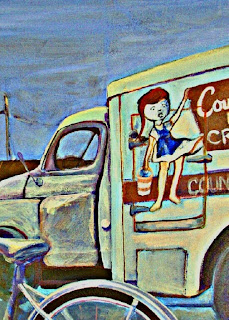I am delighted to host author, Deirdre Thurston as she surfs through cyberspace on her virtual book tour for her book, Caught. Welcome Deirdre!
About Caught
A collection of short stories, literary sketches and vignettes each capturing a moment in the life of someone a lot like you. Each story delves into human themes: expectation, desire, hope, loss, fear, joy, peace, suffering, redemption. The narrative is filled with subtle irony, humour and touching observations. The stories highlight our era of increasing social disconnection, in which technology is replacing intimacy and life occurs at a pace that challenges people’s ability to stop, observe and interpret their own existence and its relationship with those around them.
It highlights the everyday moment and provides nourishment for the harried soul. The overriding message in Caught is: that any moment in every life can be viewed as worthy of treasuring. Whether that moment is filled with despair or joy; they provide entertaining relief and nourishing benefits.
About Deirdre ThurstonI’ve been an observer of people my whole life, always intrigued by the unfolding of everyday events and what those events take on in the eyes and lives of ordinary people.
As well as seeing — and feeling — the angst and the pain, the fragile hopes and dreams, the joys and the frustrations that make up the human condition, I’ve also always been able to see the funny side.
My vantage points have been from the perspective of a daughter, a sister, a wife and a mother, an aunt, a friend and a confidante — I’ve looked at life through many lenses, yet always my own observations have been enriched by the points of view of the other players in those unfolding dramas.
And always inside of me, from the time I was five years old, has lurked a writer — framing my observations and cataloguing them. Storing them up until I was ready to capture them on paper. <!--[if gte mso 9]>
Normal 0 false false false EN-US JA X-NONE <![endif]-->
At 57 I began crafting my lifetime of observations into sketches and vignettes. Two years later I knew it was time to start sharing my stories with the world.
Stop back tomorrow and visit with Deirdre when she shares her writing inspiration!
~~~~~~~~~~~~~~~~~~~~~~~~~
Best wishes,Donna M. McDineAward-winning Children's AuthorConnect with Donna McDine on Google+A Sandy Grave ~ January 2014 ~ Guardian Angel Publishing, Inc.Powder Monkey ~ May 2013 ~ Guardian Angel Publishing, Inc.Hockey Agony ~ January 2013 ~ Guardian Angel Publishing, Inc.The Golden Pathway ~ August 2010 ~ Guardian Angel Publishing, Inc.~ Literary Classics Silver Award and Seal of Approval, Readers Favorite 2012 International Book Awards Honorable Mention and Dan Poynter's Global e-Book Awards Finalist
A Step from HeavenAn Na
middle grade - young adult
Bless me Father, for I have sinned. It has been one month since my last posting.
I have a really good excuse! Honest.
I'm bogged down in MFA thesis writing. I have to hand in the rough draft on Friday, which means I've had a whole 2.5 weeks to research and write it out. Stress. Where would I be without you?
Still, I wouldn't miss The Book Review Club for anything so I've surfaced for a few short, glorious moments to commune with the outside world...and remind myself, there is an outside world.
Here we go.
A Step from Heaven is the story of a Korean girl, Yung Ju, and her family as they move from Korea to the United States. The story follows the trials the move presents for all of the family members. The father becomes increasingly abusive, until Yung Ju is faced with either turning him in to save her mother's life (as well as her own), or turning a blind eye yet again.
Gripping stuff.
From a craft angle, I really enjoyed the vignette format An Na used to tell her story. The piece begins with Yung Ju and her father at the ocean. He is teaching her to swim. It is an endearing moment. The father is not just a brute, but he loves his daughter. Also, the scene highlights water, which is an underlying current throughout the book.
By telling the story in vignettes, the effect is very aquatic. The vignettes lap against the reader's mind like small waves. Building. Building. Ever building. Until the climax of the story when Yung Ju saves her mother and with one phone call, sweeps her entire family onto a new, healthier emotional trajectory.
The one issue I had with the piece is that, since it begins when Yung Ju is four, she refers to everyone in her family with their Korean titles, i.e. Mother is Uhmma, Grandmother is Halmoni, and Father is Apa. It might just be me, but it took me a chapter to figure out who each of the titles refers to. In the end, I caught on, but it caused me a great deal of initial confusion, as well as raised the question, if I plan to tell a story in first person, with a non-native English speaker, and want to stay true to character, how do I bring in the names of the people closest to my character without confusing my reader? It's a tough question. This approach did not feel satisfactory for me, but at the same time, I am hard pressed to come up with a better one, other than to abandon the foreign names and use ones in English. Tough call.
Nevertheless, this is a phenomenal read. The writing is tight. The flow even. The climb to the climax excellent. The characters well-rounded. And it is fairly quick. So, if you are looking for a short, craft-packed, well-written piece, look no further.
A Step from Heaven is your piece.
For other great reads, check out our fearless leader,
Barrie Summy's, blog!
Now back to that nagging thesis. Ugh.
Continuing discussion of Fran Cannon Slayton’s WHEN THE WHISTLE BLOWS…
The most unusual thing about WTWB is that it’s told as a series of vignettes, one each Halloween from 1943 to 1949. At first, I found this narrative style frustrating. After the most arresting vignettes, I didn’t want to skip ahead a year; I wanted to know the aftermath.
The storytelling method grew on me, though. When I thought about it, I always did know what happened next; the vignette style was an economical way of forcing me to imagine the inevitable conclusion.
The seven-year timespan also lets the book’s central relationships — between Jimmy and his father, and Jimmy and the railroad — develop in a natural way. I recently noted, when reading JACOB HAVE I LOVED, that I think it’s rare for middle grade or young adult books to cover long periods of time (finite series like HARRY POTTER being an exception). In fact, now that I think of it, taking place over a particularly long timespan is one of the things that makes even a book that takes place mostly in adolescence come across to me as an “adult book.” It must be something about developing an implicitly adult perspective, looking back on life.
Anyway: one consequence of this tendency toward compressed time is that the conflict sometimes has to develop and be resolved artificially quickly — or at least, books have to take place during periods of crisis, in which a timespan of a few months can carry a narrative arc for something as major as the evolution of a son’s relationship with his father.
WHEN THE WHISTLE BLOWS, on the other hand, is a more naturalistic kind of story, where the changes between some years are subtle; others, more dramatic; and the story as a whole unfolds lackadaisically without wasting time. It’s a nicely different addition to my bookcase.
Posted in On Genre, Slayton, Fran Cannon, When the Whistle Blows







Okay, Zu, let's get down to brass tacks.
Talk to us about vignettes.
Talk to us about The Lucky Place.
Author Jacqueline Woodson notes that your book is written in vignettes. Why did you choose this style?
Zu Vincent: I think the style chose me. After the fact I can say that it works because there’s a theme running through the book about how home movies, in particular, offer us a slice of life. And that theme plays into the style of short, quick scenes which give you glimpse after glimpse of these characters that eventually add up to a complete story. At the same time, each vignette has to stand on its own, as a kind of story within a story. The challenge for me as a writer was to have Cassie’s voice mature through these vignettes as she grew up on the page. And the voice had to, in turn, reflect her emotional growth in the novel.
What’s your favorite part of the book?
Zu Vincent: I think it’s that overall, I was able to write in vignette form, because the voice just took over and came rushing out that way from beginning to end. That was so satisfying. And I love the characters, every one of them. I love River City and the suburbs, which feel like a character as much as Cassie, Jamie, Ellis or Belle.
Cassie’s brother Jamie likes to dance and is teased as being too feminine by his peers. It’s also a source of tension between him and Ellis, Cassie’s stepfather. Can you talk about the role gender plays in the book?
Cassie’s devoted to both her brother and her stepdad, and it’s true that the two have a lot of tension between them, since Ellis, while compassionate, is more of a man’s man. He doesn’t understand Jamie and at the same time Jamie is angry at the loss of his real father, so he resents Ellis.
This is a big source of fear for Cassie. She’s scared Jamie will move away with their dad and Ellis won’t think of her and Jamie as his “real” children somehow. That he’ll be disappointed in them.
But like so many kids, Cassie loves both Ellis and Jamie for who they are, even as the possiblity that her brother is gay creates a lot of pain for him that Cassie shares. This dynamic gave me the opportunity to explore how children feel growing up in the midst of all this conflict. From the inside, Cassie only knows Jamie through her experience of him, just as she only understands Ellis and her father, Sikes, through their humanity.
I think this kind of divided loyalty is tearing up a lot of kids these days who find themselves in broken families, and it can happen in many ways when new, blended families don’t see eye to eye.

This image hung in my studio while I wrote The Lucky Place, and the truck appears in the novel.
Tomorrow: Zu Vincent and the future!








Thank you for such a thoughtful analysis of When the Whistle Blows! I loved reading what you had to say. Much appreciated.